Wouldnt a sword suspended like this hurt the horse or is the blade too long to get in the way ? Does anyone else have any illustrations of unusual suspensions, mounted or otherwise ?
I am interrested to hear your feedback.
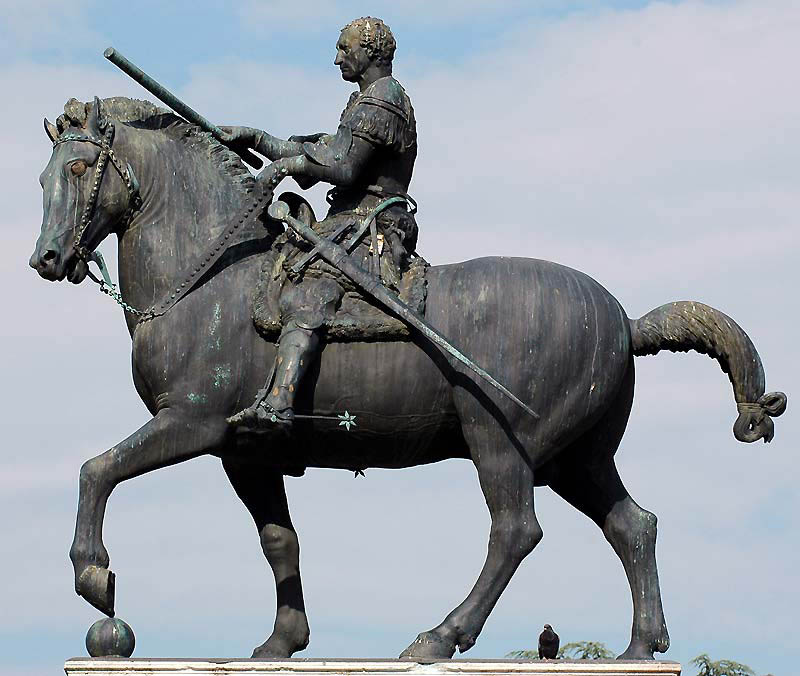
[ Download ]

| Peter Johnsson wrote: |
| Why do you think the blade is bare?
Scabbards were slim and thin. They did not build much volume around the blade, that is why it might seem likte the blade is bare. The suspension is typical for this period: two knots with thongs to attach to the waist belt. |
| Nathan Robinson wrote: |
| That's fascinating... very good find.
I'd be interested to see the woodcuts showing similar hangers. Is it a bare blade? I'm not certain... Thank you. |
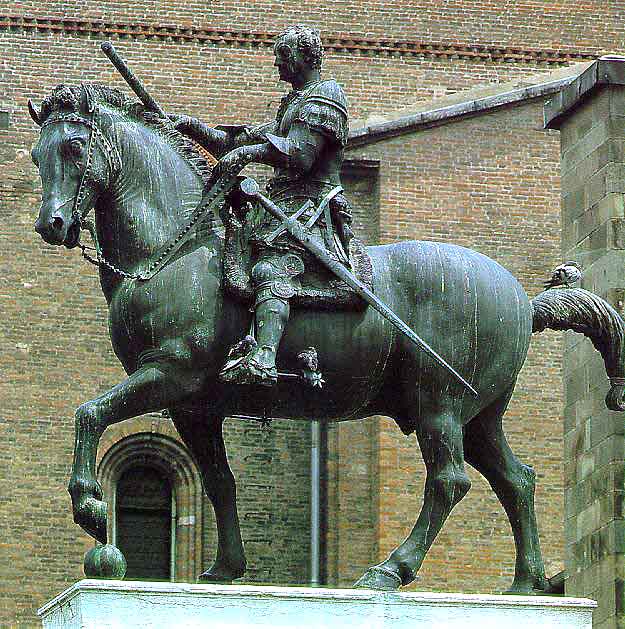
| Merv Cannon wrote: |
|
These photos are not in a very high resolution and so I've been trying to find sharper ones on the web. I have typed in just about every word I can think of including Padova and Donatello without much luck so far. You gotta just love the web sometimes, huh ?.... I type in " Donatello " and end up with three hundred shots of a Mutant Ninja Turtle !! WTF?! |
| Merv Cannon wrote: |
| These photos are not in a very high resolution and so I've been trying to find sharper ones on the web. |
| Alberto Dainese wrote: | ||
Well, if you need I can go to Piazza del Santo and just take a couple of pics for you, but it could take some time before I can go there when there is full daylight.Sani! |
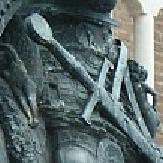

| Richard Fay wrote: |
| Hello all!
I agree with Bruno, there definitely appears to be a sculpted "triangle" over the central part of the cross, indicating a typical triangular overlap of the scabbard cover over the central part of the cross. I could see it if I looked carefully at the side-view photo posted earlier, but it's definitely visible in the head-on view. My question would be this; did every period scabbard have a chape at it's end? Could this be a case of a scabbard without a chape, making it appear as if the blade were carried bare in the loops, or is the chape just indistinct? Could the tip of the scabbard, since it's small and juts out, have suffered differential wear? Could the finer details like a chape have been lost over time? When you think about how narrow the blade represented in the statue must have been, you realize that it represents a definite thrusting-sword. That weapon must have been a wicked thruster, certainly not a dedicated cutter by any means. Almost an estoc. Neat statue, though. I've always liked this one. Cowabunga! :D (Sorry, I couldn't resist!) |
| Steve Grisetti wrote: |
| All of the discussion on this statue has been about full scabbard vs. partial scabbard, and that's great because that is the basis for the thread. But, what really impresses me most about the statue is the horse. This strikes me as a marvelous representation of an immensely powerful and majestic animal! |
| Nathan Robinson wrote: |
| So.... about those woodcuts? |
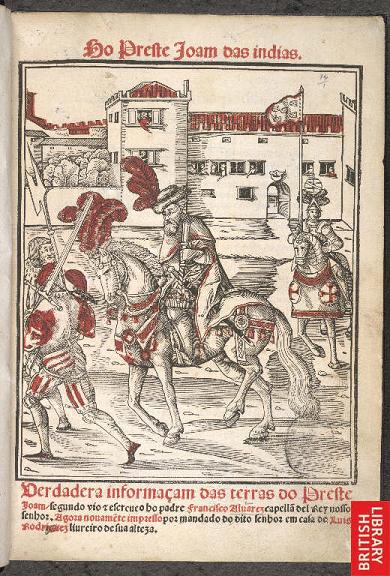

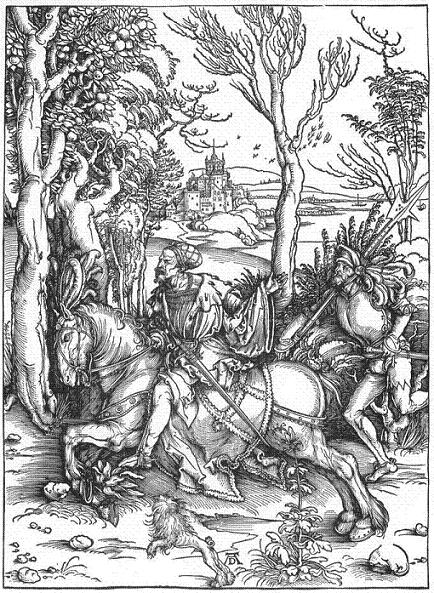
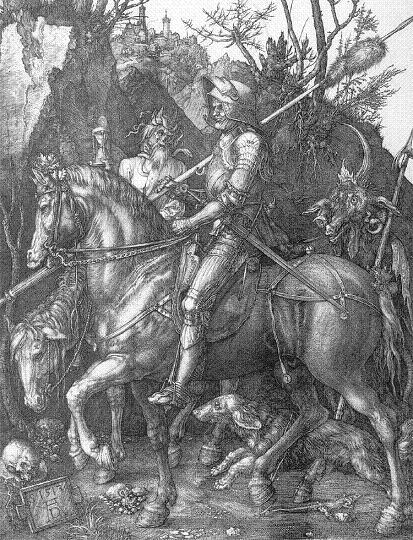

| Bruno Giordan wrote: |
|
people who mantain that knighs were not using draft horses should regard this portrait with a certain interest: its is an heavy horse indeed, I'm not an expert but this is definitely not an arab horse. |